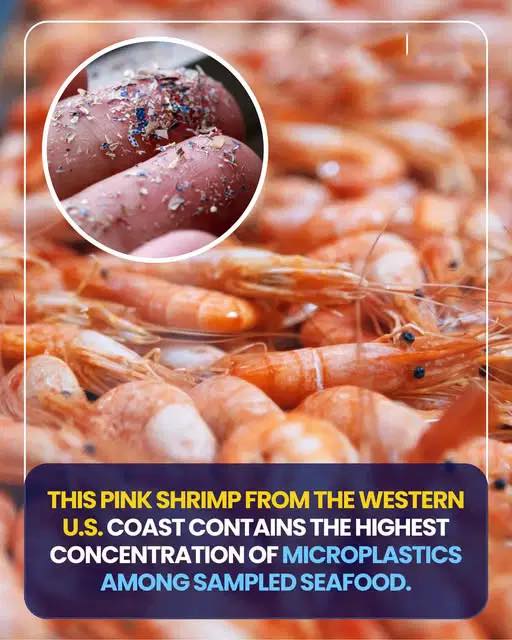Seafood Contaminated: 180 of 182 Samples Contain Microplastics—What It Means for You…
A disturbing new study from Portland State University (PSU) has revealed that microplastics are now ubiquitous in seafood along the western coast of the United States. In this study, nearly every sample tested—180 out of 182—contained microplastics, highlighting the extent of pollution in our oceans.
These microplastics, tiny particles smaller than five millimeters, were found in the edible tissues of six common species: black rockfish, lingcod, Chinook salmon, Pacific herring, Pacific lamprey, and pink shrimp. Notably, pink shrimp contained the highest concentration of microplastics, while Chinook salmon had the lowest. According to Elise Granek, a microplastics researcher and co-author of the study, “The smaller organisms we sampled seem to be ingesting more anthropogenic, non-nutritious particles,” which suggests that smaller creatures are more susceptible to plastic contamination.

This study is not an outlier. A broader investigation by the Ocean Conservancy found that about 88% of protein samples, including meat and fish, contained microplastic particles. In the U.S., this translates to an average exposure of approximately 3.8 million microplastics per adult each year, a shocking statistic that underscores how widespread this contamination is.
Microplastics enter the food chain through various sources, including garment fibers, plastic packaging, and other items that break down into small particles. These particles then find their way into our oceans, affecting marine life, and eventually, human health.
While the long-term health implications of ingesting microplastics are still under study, there is growing concern about the potential risks. The particles could disrupt the digestive system, impact immune function, or even act as carriers for toxic chemicals that might accumulate in the body over time.
As consumers, it’s crucial to stay informed about these environmental and health risks. Supporting initiatives aimed at reducing plastic pollution can help limit the spread of microplastics and protect both marine ecosystems and human health. We may not fully understand the long-term consequences yet, but this emerging data calls for urgent action to protect both our oceans and ourselves.

